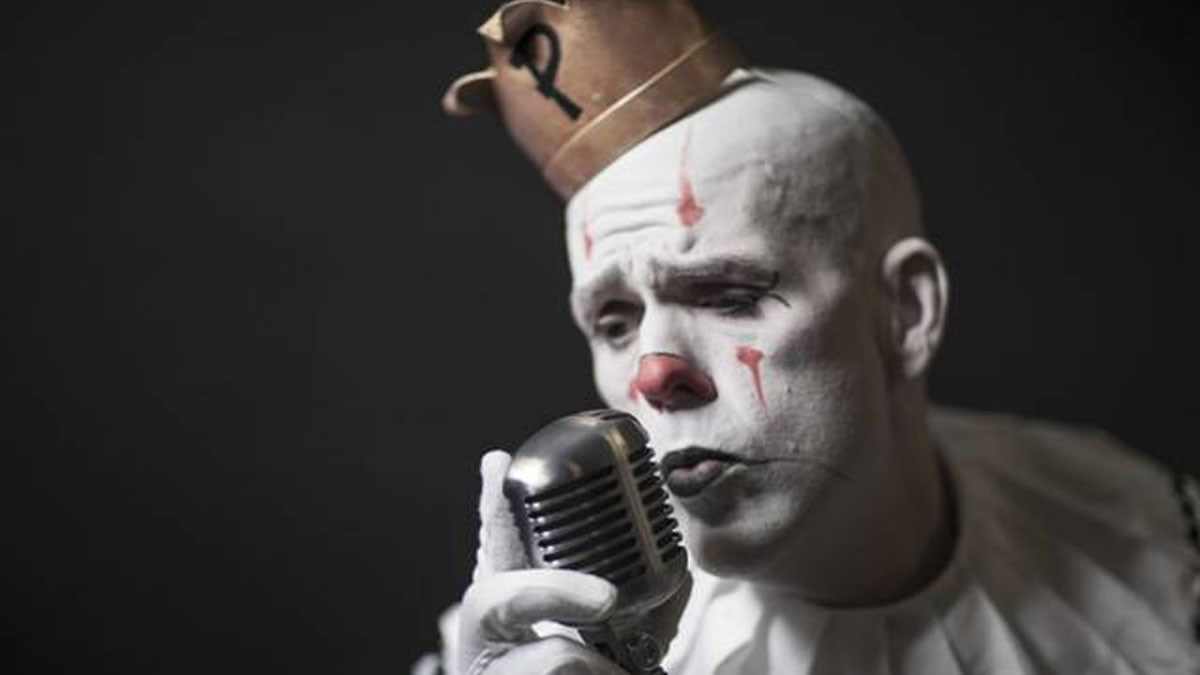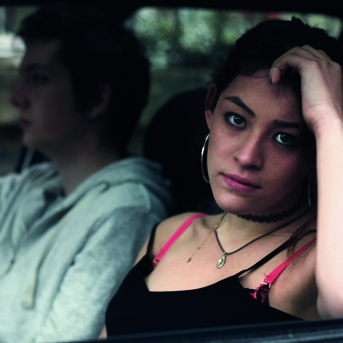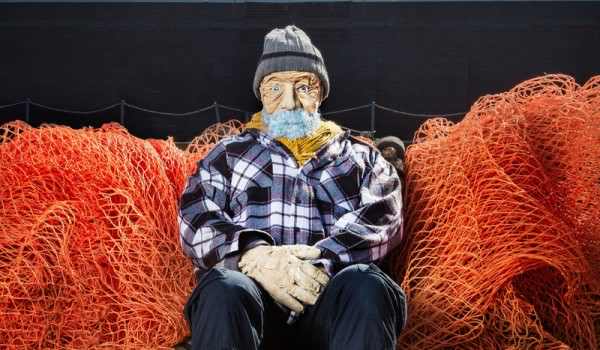I’m not sure that there can be much better in life than watching a clown who looks one minute away from an epic breakdown warbling out cabaret classics in a deep velvety baritone, whilst a montage of film clips in adoration of Kevin Costner plays in the background…
Lets Go! contains all of this, plus some spectacularly awkward and hilarious elements of audience interaction, and the most painstakingly lengthy coffee break I’ve ever seen. The Assembly’s Piccolo wooden circus tent is the ideal setting for this show, a relatively intimate semi-round space that seems to be just crying out for some clowning to take place within it.
Everything in this show is carefully structured to seem as shambolic as possible, whilst being anything but, from the audience’s entrance to see a coughing, scratching, drinking clown on stage, to Puddles’ laboured movements between each song. The skill of performer Mike Geier in presenting such a world-weary, sometimes bewildering but instantly likeable character is phenomenal. There was real humour in the juxtaposition between the slick seasoned artiste presented in the delivery of the songs, sung with breath-taking skill and confidence, and the seemingly insecure limping and muttering performer who emerged between numbers, needing frequent breaks to slowly sip his coffee and chew a never-ending piece of gum.
Puddle’s appeal is in the way in which his material references and deconstructs some of the best-known conventions of clowning; the popular notion of a morose figure being hidden behind a smiling clown’s mask is blown apart – Puddles is morose the whole time, and in fact, revels in it! The use of silence, gesture and physicality to communicate are also fully explored.
Audience members are persuaded to join Puddles on stage and participate in ever more ridiculous action such as repeatedly reading out lines from Costner’s films or spontaneous karaoke, all through very subtle use of gesture or facial expression on Puddles’ part. There is a clear nod to the influence of mass and social media here too, Puddles himself being a very popular character, cited as having over 20 million YouTube views. Many of his songs are accompanied by the kind of clips made popular by sites such as Facebook (dogs in hats, robots falling over) and we are encouraged to take photos during the set, and afterwards, with Puddles himself. This is a clever framing device, allowing a sense of mass appeal and engagement with an act that is actually quite subversive and in many aspects, enticingly unique.





